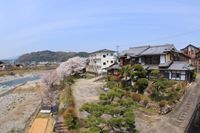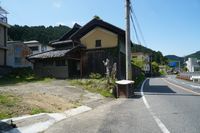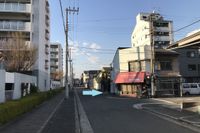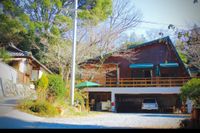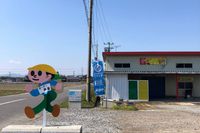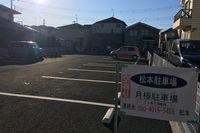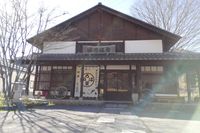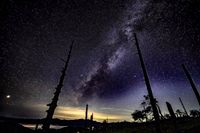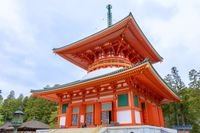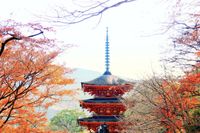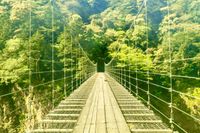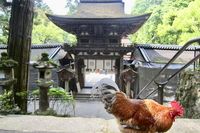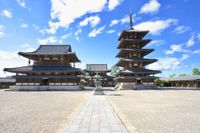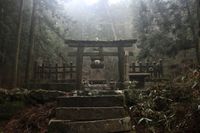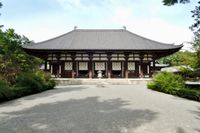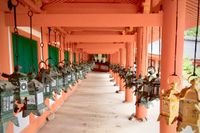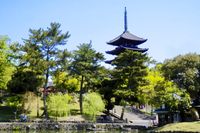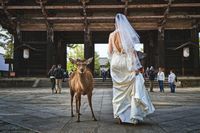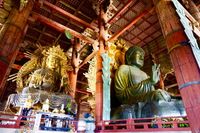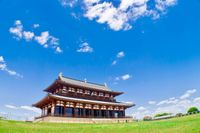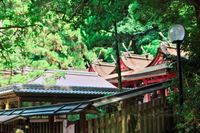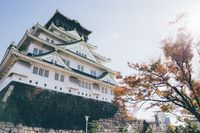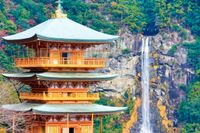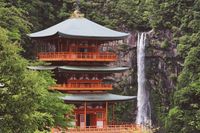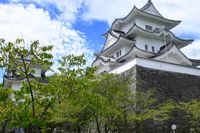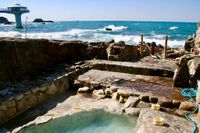Mitarai Valley
奈良県/吉野郡天川村

Description
A valley in Yoshino-gun, Nara prefecture. As the valley is quite deep there are various waterfalls, large and small, and visitors can see the brilliant green landscape that is largely untouched by humans. The greenery and autumn leaves are said to be the best in the Kinki region.
Homepage
Address
Nearby Car Night Spots
Shin Meishin Suzuka PA (inbound) RV Station Suzuka * With Power!
¥2,200〜
/ per nightMie Yamamotocho, Suzuka-shi
4.3
(155)Nearby Activities
There is no nearby activities
Ranking Stations
Shin Meishin Suzuka PA (inbound) RV Station Suzuka * With Power!
¥2,200〜
/ per nightMie Yamamotocho, Suzuka-shi
4.3
(155)Vanlife BASE | 45 min. from Narita Airport / Perfect for campervan travel/A seaside town rich in nature/Japanese countryside town/welcome traveler
¥7,000〜
/ per nightChiba Koseki, Kujukuri-machi, Sambu-gun
5.0
(61)Nearby Drive Spots
Odaigahara
This is a mountain plateau at an altitude of 1695 meters, on the border of Nara and Mie prefectures. It is a secluded area where you can see the spectacular views of the Milky Way, shining in a clear night sky. Stores, restaurants, accommodation facilities are also open close around the visitors' centre, and it is a popular place for astronomical observation.※Credit:Tsubasa Mizoguchihttp://bit.ly/2MI1vQs
Kongobuji Temple
This is a mount Koya Shingon sect central temple built in 816 AD under the instruction of the great teacher and poet, Kukai. The main object of worship is known as Yakushi Nyorai, and it is registered as a World Heritage Site. This area is a sacred buddhist site located at the top of the mountain, with an altitude of 1000 meters, and around 100 temples are concentrated in this area. In the temples further into the area contain memorial towers to great figures such as Oda Nobunaga, Shinran, Date Masamune and others. One can also find the tombstone of Takeda Shingen here, as well as as as the mausoleum of Uesugi Kenshin, which is a building which also has the same function as a shrine.
Hasedera Temple
This is a temple built by Domyo in 727 AD, and is the branch temple of the Shingon Buzan sect main temple. The object of faith is known as Juichimen Kannnon(11-faced) and is the head temple of the Hasedeta temple group, of which there are around 240 in Japan. As one of Japan's most prominent Kannon sacred sites in Japan, it attracted the faith and reverence of many aristocrats and nobles. Situated in the middle of Mount Hatsuse, in April and March, around 7000 Moutan Peony flowers of 150 varieties bloom in the area, which had led the temple to be also known as the "Flower temple".長谷寺 © w_0705_ クリエイティブコモンズライセンス(表示4.0 国際)https://creativecommons.org/licenses/by/4.0/
Dorokyo Gorge
This is a canyon upstream of the Kumano River. From the upstream, it is known as OkutoroKamitoroShimotoro, and the upper stream of the river is famously known as the "Doro Haccho". The valley offers spectacular geological views, where there are huge rock formations, strange rocky formations and seemingly endless cliff formations. The scenery from the 84 meter long suspension bridge "Yahiko Bridge" is a particular highlight.
Isonokami Jingu Shrine
This is a shrine that was built in 570 AD. It is one of Japan's oldest shrines, housing the great God Futsunomitama no Okami, and was the main temple of the ruler of military family, known as Mononobe clan. Even amongst old faiths, it was known as a particularly distinguished shrine. There are around 40 chickens in the area which are said to be underlings to the shrine gods. If you hear the chickens crying out, it is said to bring good fortune.
Horyuji Temple
This is a temple built in 607 AD by Prince Shotoku, and is a branch temple of the Shotoku sect head temple. It is registered as a world heritage. The object of worship is known as Shaka Nyorai and during the Sengoku era(1467-1600), was restored by the Toyotomi clan and Tokugawa families, as well as significant restoration between 1934 and 1985. Over a long period of time, it has been restored to its former glory. It is a treasure trove of cultural assets with 17 national treasures and 35 assets of cultural importance.
The Kumano Kodo Pilgrimage Routes
This place is a collective term for the pilgrimage road to the Kumano three shrines (Kumano Hongu Taisha、Kumano Hayatama Taisha、Kumano Nachi Taisha), and is registered as a World Heritage Site. The area is a natural place of worship where people from all walks of life, from the emperor and aristocrats, to ordinary people come to visit this area for worship. The area is also popular as a hiking destination.
Toshodaiji Temple
This temple, which was a branch of the main temple of the Rishu sect, was built in 759 AD by Jianzhen (known as Ganjin in Japanese), a Chinese monk who singlehandedly spread the teachings of Buddhism in Japan. The main object of worship is known as Rushana buddha and is registered as a World Heritage Site. The temple is significant in that is preserves the original 8th century Nara Tenpyou culture, and has the golden hall and auditorium that was constructed during the Nara era(710-794). The name comes from the fact that Jianzhen spent his later years at the temple.
Kasuga Taisha Shrine
This is a shrine that was built in 768 AD to enshrine the Kasuga gods Nakatomi clan and Fujiwara clan. The Kasuga Gods are known as Takemi Kazuchi no Mikoto(Kashima Jingu Shrine), Futsunushi no Kami(Katori Jingu Shrine), Amenokoyane no Mikoto and Himegami(Hiraoka Shrine). It is the head temple of the Kasuga shrine group, of which there are around 1000 in Japan, and it is said that deer are the underlings to the shrine Gods, from the legend that Takemi Kazuchi no Mikoto rode here on a white deer. It is registered as a World Heritage Site.
Kofukuji Temple
This is a temple built in 669 AD by Fujiwara Fuhito, amongst others, and is a branch temple of the Hoso sect main temple. The main object of worship is known as Shaka Nyorai, and is registered as a national treasure. It was considered as one of the four great temples during the Nara period(710-794) and one of the seven major temples during the Heian period(794-1185), and increased in prominence through sharing teachings with Kasuga Taisha Shrine. There are numerous cultural treasures such as the wooden deva king statue.
Nara Park
Registered as a World Heritage Site, this is a famous deer park. Around 1,200 wild deer inhabit the area, and is popular for feeding the deer with "Deer senbei" (a type of savoury biscuit). The deer is said to be a god of Kasuga Taisha Shrine, which is in the local area, and Takemikazuchi is said to have come to the area from Kashima Jingu Shrine in Ibaraki riding on a deer when the shrine was built.
Todaiji Temple
This temple was built in 741 AD under the instruction of Emperor Shomu, and is a branch temple of the Kegon sect head temple. The temple's buddha statue known as the "Daibutsu of Nara" was built, and became a place of hope and support from Emperor Shomu, during famine, earthquakes and illness of the time. There are many items of cultural importance such as the largest wooden buddhist temple in the world, and is registered as a national heritage site.
Heijo Palace
A town built by Empress Genmei in 710 AD, it is a registered world heritage site. The town was created as a capital to practice the law of the land and was 2,500 hectares in size. The model of the city was based on China's city of Choan City. The Suzaku gate and imperial council hall have been restored, allowing visitors to feel the history of the original town.
Hiraoka Shrine
This is a shrine that is said to have been built in 660 BC. The original shrine Gods are known as Amenokoyane no Mikoto, Hime no Omikami, and subsequently the Futsunushi no Kami(Katori Jingu Shrine) and Takemikazuchi no Mikoto (Kashima Shrine) were deified to the shrine, but where then moved to the Kasuga Taisha Shrine. Because of this, the shrine is sometimes known as the "ex-Kasuga shrine". Many important figures of their time such as Taira KiyomoriMinamoto YoshitsuneMinamoto YoritomoAshikaga Takauji and Toyotomi Hideyori visited this shrine, which possesses what is known as "an ancient sanctuary".
Osaka Castle
This is one of Japan's three largest castles built by Toyotomi Hideyoshi in 1583. It was also the scene for the great battle known as "Osaka no Eki", fought between the Toyotomi clan and Tokugawa noble families after the death of Toyotomi Hideyoshi. The current castle tower was built by the Tokugawa family after the death of Toyotomi, and is known as one of the great symbols of Osaka. It is familiar to many people and is known as the "Taikohan Castle".
Nachi Falls
This is a waterfall of Seigantoji Temple, and is a symbol of the World Heritage The Kumano Kodo Pilgrimage Routes. It is known as one of the three great waterfalls of Japan and has a height of 133 meters. Historically it was known as one of the 48 holy waterfalls of Nachi, and was revered as a waterfall of Hiro Shrine.
Seigantoji Temple
This is a temple that was said to be built in the shape of a God, and is used as an observation deck. Its construction date is unknown. The object of worship is known as Nyoirin Kannon and is known as a world heritage site along with Kumano Hongu Taisha shrine. The main hall was reconstructed by Toyotomi Hideyoshi in 1590 and was also cherished by the Tokugawa family. Visitors can witness the exquisite contrast between the orange-red 3 storied pagoda and Nachi Falls, and is an essential photo spot to capture the harmony between Shinto and Buddhism.
Iga Ueno Castle
This is a castle that was built in 1585 under the order of Tsutsui Sadatsugu. During the Sengoku era(1467-1600), it was the main base for the Iga Ninjas, and is also known as "Hakuho castle" due to its white and elegant appearance. Underground there is an Iga Ninja museum where visitors can experience the true world of Ninjas.
Byodoin Temple
This is a temple built in 1052 by Fujiwara Yorimichi and is registered as a World Heritage Site. The main object of worship is known as Amida Nyorai, and displays the luxurious aristocratic culture of Fujiwara clan. In the central island of the pond, there is what is known as the phoenix temple, and it appears as if there is a palace floating in the middle of the pond in a treasure paradise. You can see the phoenix design on 10 yen coins and 10,000 yen notes.
Shirahama Onsen
This is an old hot spring on the coast of Wakayama Prefecture. It boasts 1400 years of history, and various emperors such as Emperor KogyokuEmperor Jito and Emperor Monmu visited the place and is registered in the chronicles of Japan. It was loved by nobles and aristocrats as well as the regular people of the time, as it is today. It has plenty of facilities such as lodging, cooking areas, and camping areas. There are amazing views of the pacific ocean from the baths.

